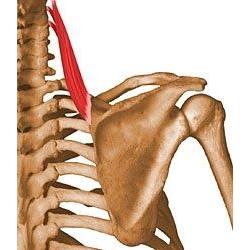 The levator scapulae muscle is a hard-working muscle that is very rarely talked about.
The levator scapulae muscle is a hard-working muscle that is very rarely talked about.
The Levator Scapulae muscle elevates the shoulder blade. Levator is from the same Latin word as elevator, and Scapulae is Latin for the shoulder blade.
One of My Patient Cases Which Is A Typical Levator Scapuale Muscle Issue Clinical Presentation:
(Using a hypthetical name and age)- Larry, age 37, typically had levator scapulae muscle trouble. He said constant neck and upper back pain and stiffness in the right side of his neck ever since a fender bender three months earlier, and couldn’t turn his head to the right side at all. His insurance is paying for physical therapy, but the stretching attraction only seems to be making his pain worse. Electrostimulation help, but it didn’t last. Precise deep tissue massage in the form of Active Release Technique to Larry’s levator scapulae muscles cut through the pain after only one visit. It gave him the first relief in area after years of chronic muscle tightness and upper back pain. He was then shown varies ways to stretch and and relax this area himself with the use of nerve flosses. Within 10 days (and only three treatments), his pain was gone. In three weeks, he could turn its head again for the full range of motion.
Symptoms and Causes
Fascial adhesions in levator scapulae muscles cause pain and stiffness in the angle of the neck. When sufficiently active, they also refer a lesser degree of pain along inner edge of the shoulder blade into the back of the shoulder. A levator scapulae muscle fascial adhesion is what keeps your keep you from turning your head look behind you when you’re backing up in your car. You may not be able to turn your head at all toward the side of the adhesion.
The lower end of each levator scapulae muscle attaches to the inner edge of the top angle of the corresponding shoulder blade. It’s upper end attaches to the side of the top four neck vertebra. This arrangement allows levator scapulae muscle to help raise the shoulder blade and thereby raise the shoulder. This function is very one that gets the muscle into trouble. When stress and bad posture habits keep the shoulders up, you can be sure that the levator scapulae muscles are doing much of the work.Because attachments to the side of the neck bones, levator is also able to help turn that your head to the same side. When trigger points or fascial adhesions develop they disabled the muscle, leaving it reluctant to contract and perform. The muscle also resist lengthening, which can keep you from turning your head and other direction too.Many things can make trouble for the levator scapulae muscle, including sleeping on your side without support your neck, typing while looking at your copy out to one side, and holding the phone clamped between your head and shoulder. Backpacks versus suspend suspended from the shoulder straps are as bad for levator scapulae muscle as for the trapezius muscle. Both have this to stay strongly contracted to counter the downward pull. You’ll observe that a woman who carries her purse on a shoulder strap has her shoulder hiked up to keep the purse from falling off; this causes further strain on the levator scapulae.The levator muscles are also stressed by overexercise, emotional tension, and armrests that are too high or too low. The levator scapulae muscle is one of many muscles that are strained by whiplash. trigger points are fascial adhesions set up by an auto accident or a fall can be undetected for years, the unknown sources of chronic pain disability.As a pair, the levators serve as a cable restraint for the head when it hangs forward. They are consequently severely abused by habitually carrying the head forward. Levator scapulae muscle and the trapezius muscles can be strained beyond endurance by habitually reading with your book flat on a desk, since all muscle your neck and upper back muscles are contracted while your head is hanging forward in that position.
Treatment – So now how do I fix it?
First of all when it comes to treatment let me first suggest someone like myself who is certified in Active Release Technique. Active Release Technique (A.R.T.) is a highly systematic approach to injuries of muscle, tendons, nerves and the surrounding soft tissues.
The most accessible fascial adhesion is located just above the muscle where the muscle attaches to the supper angle of the shoulder blade. Unfortunately, this isn’t the trigger point the causes the most trouble. It feels good to work the spot, but if you don’t get rid of all of it, your neck pain and stiffness will still remain. Upper trigger point or fascial adhesion is the one you have to go after then. The use of a ball upon this adhesion will get depth, but will not completely get rid of it. This is were a certified A.R.T. comes in. Typically between 7-10 visits the adhesion will be broken down, allowing for full range of motion and no more pain.
